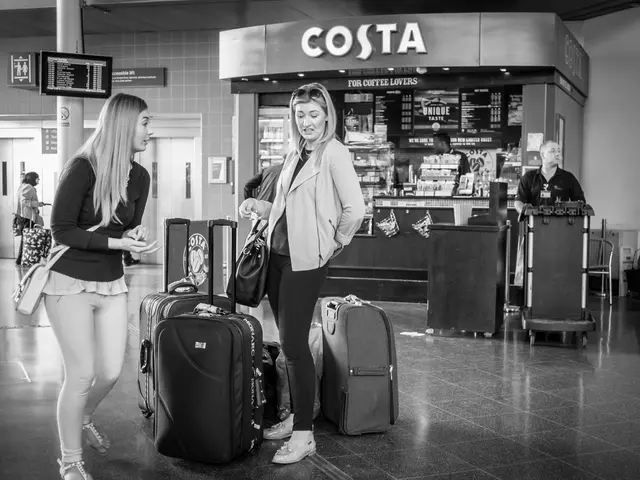Taxi Services Integration in Public Transportation - Organization Suggests Innovative Approaches - Taxi Services Integration in Mainstream Transportation - Association Proposes Novel Approaches
Thuringia's Transportation Business Association Advocates for Expanded Use of Taxis in Subsidized Public Transportation
The Thuringia Transportation Business Association is considering a proposal to incorporate more taxis into subsidized public transportation. Such measures could potentially enhance mobility offerings, particularly in under-served rural areas and nearby cities, Martin Kammer, the association's managing director in Thuringia, suggested in an interview with the German Press Agency (dpa) in Erfurt.
Currently, an estimated 800 taxis and approximately 1,200 rental cars operate on Thuringia's roads. However, the Association of Central German Bus Companies expressed doubts about the cost-effectiveness of these proposals.
Despite the ongoing financial stability of the taxi industry, primarily due to contract trips for patient transport and services like those for students with disabilities, few taxi models are currently utilized in Thuringia's public transportation. Kammer mentioned the city of Jena and the district of Greiz as exceptions, emphasizing the need for a review of Thuringia's regular service network from a fiscal and service perspective.
Taxis could be employed to manage routes with low bus usage, transport passengers to public transportation hubs, or provide service to areas with limited departures. Incorporating taxis into public transportation frameworks has the potential to improve mobility in urban fringe areas and rural regions, according to the association, which represents over 600 transportation companies, logistics providers, freight forwarders, and taxi and rental car companies.
Tilman Wagenknecht, the managing director of the Association of Central German Bus Companies, evinced a somewhat skeptical yet open stance. He suggested that taxis could feature in future revisions of public transportation plans in certain regions, especially for feeder traffic to connect rural areas via bus. However, local governments, responsible for determining public transportation plans, must also take transportation costs per passenger into account.
Existing models for on-demand transportation services, including call buses or call taxis, have been implemented in some regions. Around 100 bus companies participate in regular service in Thuringia.
The Enrichment Data suggests a broader trend in Germany towards greater integration of taxis into public transportation frameworks, with initiatives such as the "Germany Ticket Plus" for more straightforward incorporation of taxis into public transport networks. Additionally, modernization pacts for local transport and the emergence of mobility concepts like subscriptions that bundle public transport, carsharing, and taxi rides are gaining traction.
The Thuringia Transportation Business Association proposes expanding vocational training programs for taxi drivers, to ensure a skilled workforce that can effectively manage the increased use of taxis in subsidized public transportation. This proposition aligns with the industry's ambition to financially support the implementation of such changes, as investments in vocational training may lead to improved service quality and reduced transportation costs per passenger.








